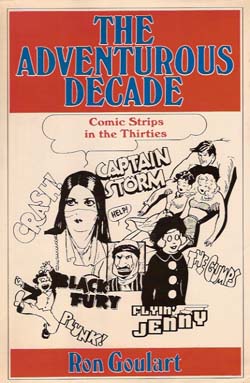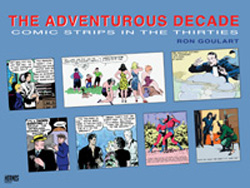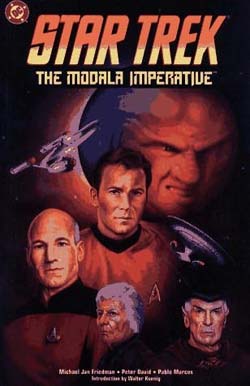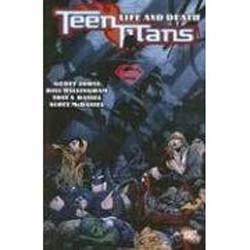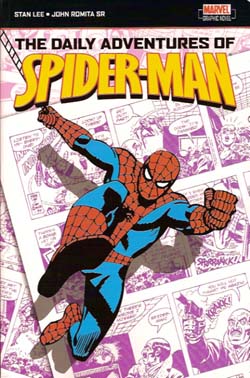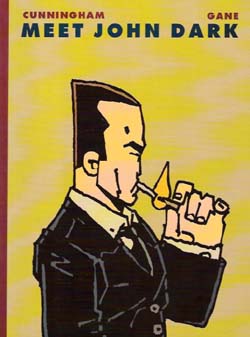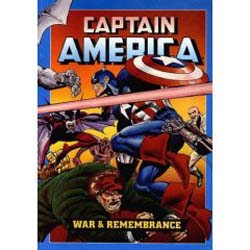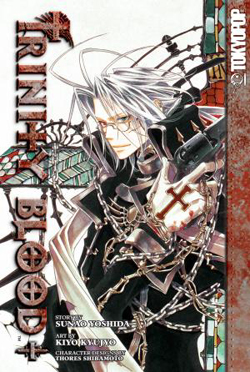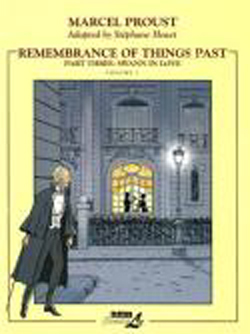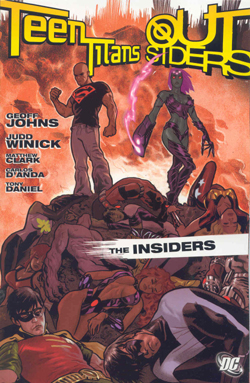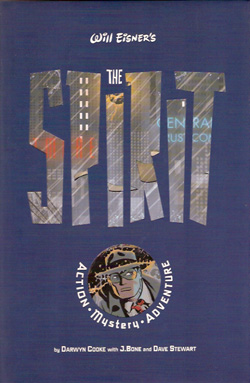
By Darwyn Cooke with J. Bone and Dave Stewart (DC Comics)
ISBN13: 978-1-84576-687-0
Some people are just hard to please. The Spirit is one of the greatest and most influential comics creations of all time and Darwyn Cooke is unarguably one of the best writer/artists in the industry today, but I still find it difficult to wholeheartedly praise his first efforts on DC’s acquisition and revival of the character, as seen in this compilation collecting the first six issues of comic book and the one-shot Batman/The Spirit.
Although I’m sure the impending movie has had a lot to do with this enterprise, The Spirit has always been a fundamentally Graphic and Design icon and Cooke has maintained the visual innovations as well as the racy, tongue-in-cheek comedy and breathtaking action. Perhaps my objections stem mostly from the facts that it’s set in a more-or-less contemporary world rather than the fabled forties and fifties. The ingenuous, camouflaged sexuality of Will Eisner’s work is missing from modern “in-your-face†liberated relationships, and that passionate tension is sorely missed. Or perhaps I’m just too churlish to accept anybody else’s interpretation of the character.
I certainly can’t fault the work on its own terms. Starting at full tilt with “Ice Ginger Coffeeâ€, which introduces the masked vigilante-detective who fights crime in Central City with the covert approval of Police Commissioner Dolan in a barn-storming tale of abduction, extortion and gangsterism, Cooke tells captivating adventure stories that will appeal to much wider audiences than the average super-hero comic. “The Maneater†introduces P’Gell, – a sultry vixen whose greatest weapon is ruthless allure – and the mostly comedic bit-player Hussein to the cast, as well as filling in some blanks from the hero’s past, when he was merely Private Eye Denny Colt, and the boyfriend of Dolan’s daughter Ellen.
A bloody gang-massacre is only the beginning in “Resurrectionâ€, which reveals the origin of The Spirit and introduces the gruesome Alvarro Mortez, who will return to bedevil Central City in future issues. “Hard like Satin†pits the outlaw detective against the indomitable CIA agent Silk Satin in a gruelling test of wills that brings Eisner’s ultimate villain The Octopus into the modern continuity, and the hysterically funny and chilling “Media Man†reintroduces Mister Carrion and his beloved vulture Miss Julia. The final solo adventure “Almost Blue†is a fantastical tale of rock ‘n ‘roll excess and extraterrestrial addiction with a poignant undercurrent which sits a little uncomfortably with the book’s final chapter.
“Crime Convention†adds Jeph Loeb to the regular team of Cooke, inker J. Bone and colourist Dave Stewart, to recount a frantic, funny tale of The Spirit and Batman’s first meeting whilst safeguarding a Police Commissioners convention from the amassed hordes of their respective Rogues Galleries. Originally released as a prelude to the ongoing Spirit series, this is oddly out of place both stylistically and thematically but is enjoyable nevertheless.
This is by any standard a truly great comics read and you shouldn’t let my reluctance influence you. If you haven’t seen Eisner’s originals you must read them, no argument there. But even though this volume isn’t MY Spirit, it is a damned good one. Go on, read them both. Please yourselves…
© 2007 DC Comics and Will Eisner Studios, Inc. All Rights Reserved.

